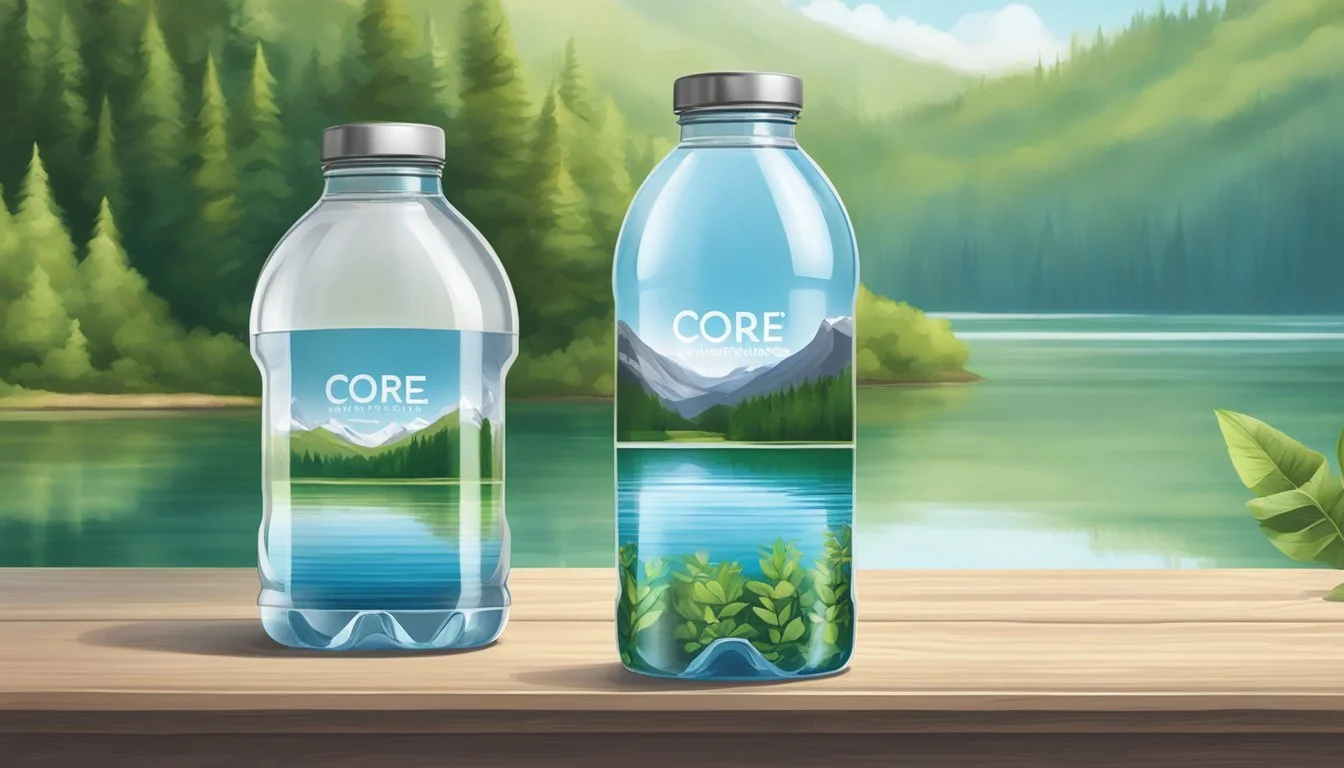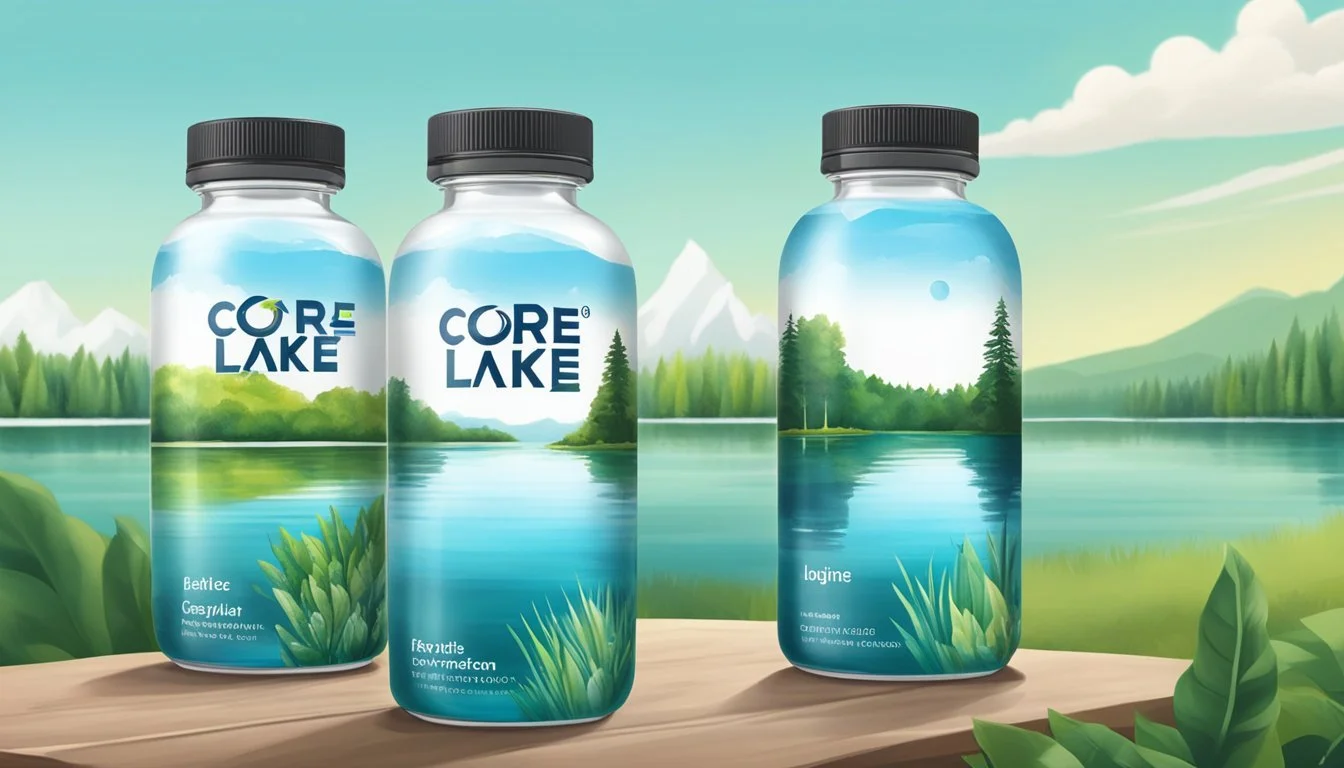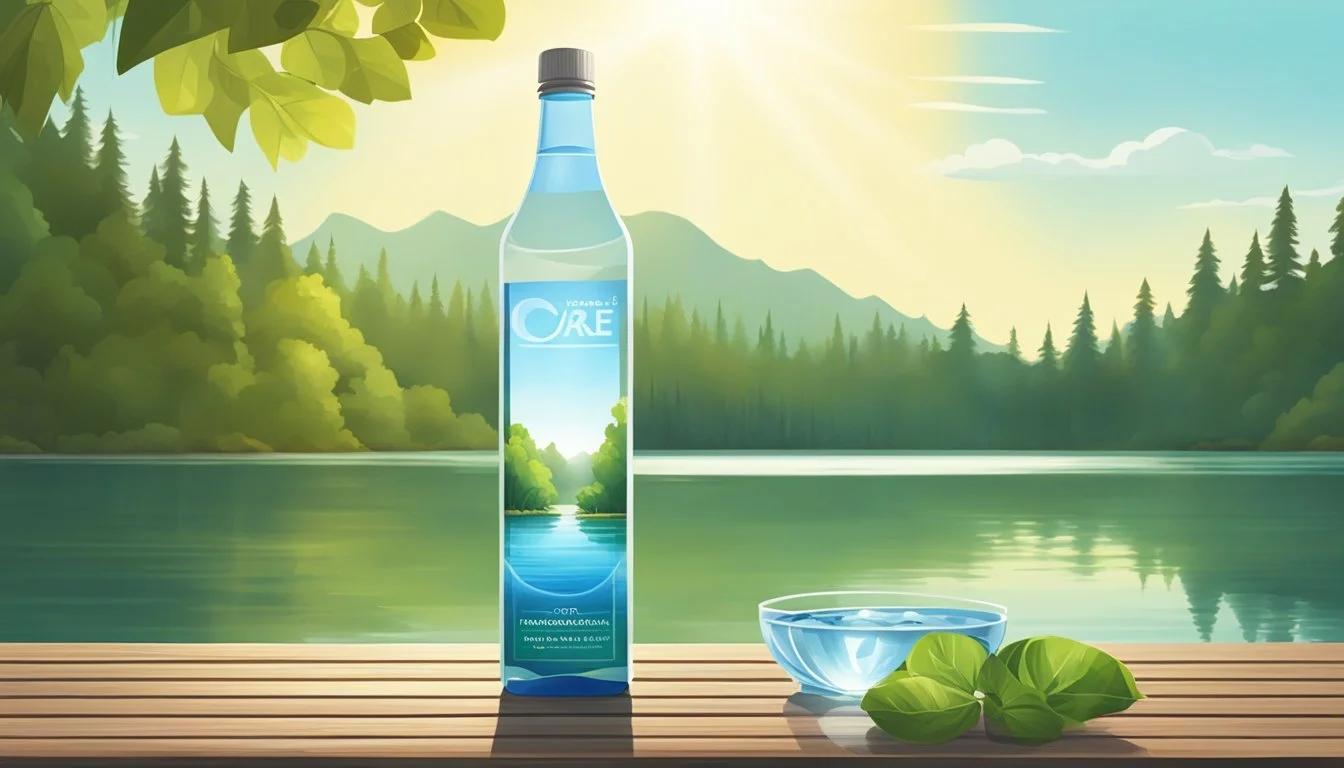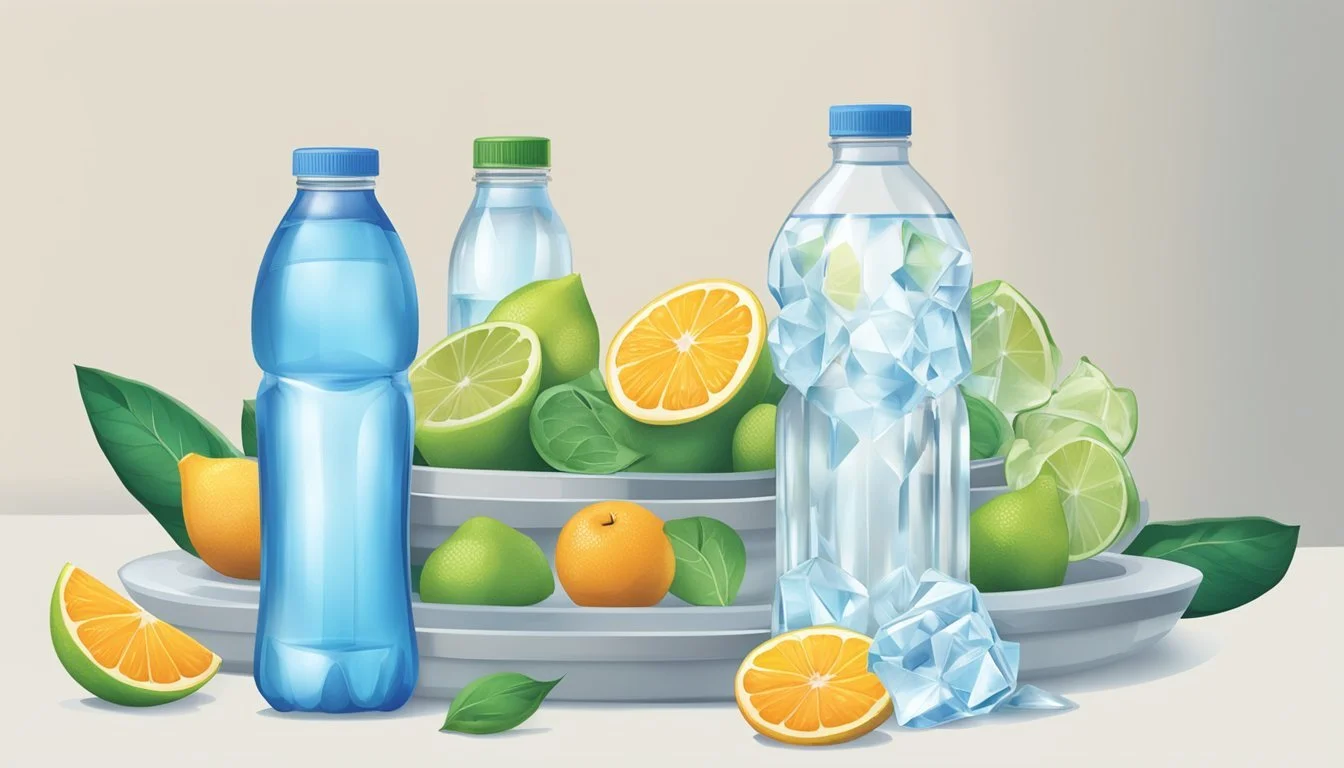Core Hydration vs. Crystal Lake
Comparing Bottled Water Quality and Benefits
In the world of bottled water, discerning consumers often find themselves choosing between brands like Core Hydration and Crystal Lake. Each offers a unique profile of taste and purported benefits, but which truly stands out? Core Hydration boasts a pH-balanced formulation that aligns closely with the body's natural pH level, while Crystal Lake is celebrated for its pristine, natural source.
Core Hydration prides itself on being slightly alkaline, optimized for those seeking hydration with added electrolytes like potassium and magnesium. Its ergonomic bottle design also ensures ease of use. On the other hand, Crystal Lake emphasizes purity, sourced from natural springs without added minerals or artificial sweeteners, making it a go-to for those who prefer their water untouched.
For consumers looking at health benefits and convenience, Core Hydration might edge out with its balanced pH and added electrolytes. Crystal Lake, with its simple purity and clean taste, appeals to traditionalists favoring natural sources. The decision ultimately boils down to preference for mineral content or natural origin.
Comparing Quality of Core Hydration and Crystal Lake
Core Hydration and Crystal Lake bottled waters offer distinct characteristics, making their comparison worthwhile. The discussion covers elements like mineral content, pH balance, taste, health aspects, and contamination risks.
Mineral Content Analysis
Core Hydration is known for its added minerals, including calcium chloride, magnesium chloride, and potassium bicarbonate, which aim to aid in hydration and improve taste. These electrolytes are essential for maintaining the body's balance and function.
Crystal Lake, on the other hand, often positions itself as a natural spring water with minimal processing. The mineral content of Crystal Lake may vary depending on its source, but it generally does not include added electrolytes. Consumers looking for enhanced hydration might lean towards Core Hydration due to its specifically tailored mineral profile.
PH Level and Alkalinity
Core Hydration markets its water as having a perfect pH level of around 7.4, which is considered close to the body's natural pH. This slight alkalinity can be beneficial in neutralizing acids in the body and potentially contributing to overall well-being.
Crystal Lake does not typically emphasize pH balance in its branding. As a natural spring water, its pH level can vary but usually falls within the neutral range. For those specifically seeking an alkaline water experience, Core Hydration's consistent pH level might be more appealing.
Taste Profile
Taste is a highly subjective aspect but crucial for regular water consumption. Core Hydration's added minerals can give it a slightly distinct taste, often described as clean and crisp. The addition of electrolytes may also contribute to a smoother mouthfeel, making it more palatable to some.
Crystal Lake's taste profile depends heavily on its natural mineral composition. It tends to have a refreshing and pure taste typical of spring waters, with subtle variations depending on the specific bottling location. Consumers who prefer a more natural and less processed taste might prefer Crystal Lake.
Health Implications
From a health perspective, both waters aim to provide safe and beneficial hydration. Core Hydration's added electrolytes can be beneficial, especially for athletes or individuals in need of replenishing lost minerals.
Crystal Lake, being a spring water, offers a natural source of hydration with a potentially diverse mineral content. Both waters are free from calories and sugars, making them healthy choices. The decision often comes down to whether the consumer values the added minerals in Core Hydration or the natural purity of Crystal Lake.
Contamination Risk
Contamination risk is an essential consideration for bottled water. Core Hydration undergoes rigorous purification processes to ensure the removal of harmful substances like heavy metals (lead, arsenic, mercury) and PFAS chemicals.
Crystal Lake, sourced from natural springs, also emphasizes safety, but the risk of contaminants can vary based on the source's geographical and environmental factors. Both brands strive for high safety standards, but their different approaches may influence consumer trust based on their preferences for processed versus natural water.
In summary, the choice between Core Hydration and Crystal Lake depends on individual preferences for mineral content, pH balance, taste, health benefits, and safety assurances.
Environmental and Health Safety Standards
When evaluating bottled waters such as Core Hydration and Crystal Lake, it is critical to consider the environmental and health safety standards they uphold. This includes their purification and filtration methods, packaging materials, and the testing and certifications each brand secures.
Purification and Filtration Methods
Core Hydration employs reverse osmosis, a process that forces water through a semipermeable membrane to remove impurities and contaminants. This method is highly effective, yielding purified water free of most dissolved solids.
Crystal Lake, in contrast, often relies on vapor-distilled techniques alongside additional filtration steps. Vapor-distillation involves heating water to create steam, leaving behind heavier contaminants, and then condensing the steam back into liquid. Both methods aim to provide consumers with pure, clean water.
Comparison of Methods:
Parameter Core Hydration Crystal Lake Primary Technique Reverse Osmosis Vapor-Distillation Additional Filtration Yes Yes
Packaging Materials and Sustainability
Core Hydration bottles are made from BPA-free plastic, which offers a safer alternative to traditional plastics laden with harmful chemicals. They also focus on using recyclable materials, encouraging users to minimize waste through recycling programs.
Crystal Lake utilizes similar BPA-free plastic bottles but places a stronger emphasis on reducing single-use plastics by promoting reusable options. Their packaging initiatives often highlight sustainability, aiming to reduce the overall environmental footprint of their products by utilizing eco-friendly materials whenever possible.
Testing and Certifications
Both brands are committed to rigorous testing standards to ensure the safety and purity of their water. Core Hydration regularly tests its water against both FDA and International Bottled Water Association (IBWA) standards, ensuring compliance with stringent safety regulations.
Crystal Lake follows a similar path, conducting frequent tests to meet EPA guidelines for bottled water. Additionally, each brand seeks third-party certifications to validate their safety claims, demonstrating a commitment to transparency and consumer trust.
Certification Bodies:
Core Hydration: FDA, IBWA
Crystal Lake: EPA, various third-party certifications
These testing procedures and certifications reflect a dedication to producing safe, high-quality bottled water.
Brand Profiles and Corporate Responsibility
Core Hydration and Crystal Lake, both notable names in the bottled water industry, differ significantly in their history, environmental initiatives, and consumer trust. These aspects shape their market presence and consumer perceptions.
History and Origin
Core Hydration was introduced to the market with an emphasis on premium purity and balance. The brand boasts a seven-stage purification process, including reverse osmosis, aiming for optimum hydration. Crystal Lake, rooted in tradition, sources its water from pristine natural springs. This source contributes to its rich mineral content, adding a unique taste profile.
Environmental Initiatives
Core Hydration emphasizes sustainable packaging, utilizing recyclable plastic to reduce its carbon footprint. The brand’s efforts in recycling are meant to align with growing consumer demand for environmentally friendly products. Crystal Lake's initiatives center around water conservation and protecting natural water sources. The company's commitment to preserving these ecosystems reflects in its corporate strategies and practices.
Consumer Trust and Brand Reputation
Consumers recognize Core Hydration for its modern, science-backed approach to purity and hydration. The brand is often associated with athletic endorsements and health-oriented marketing. Crystal Lake, with its deep-rooted heritage, enjoys trust for its traditional spring water quality. The brand is perceived as authentic and reliable, appealing to consumers looking for natural water options.
Both brands cater to different market segments, yet they share a commitment to quality and sustainable practices.
Comparative Market Analysis
Both Core Hydration and Crystal Lake target consumers who prioritize water purity and health benefits. This section will compare how these brands and their competitors perform in the market, focusing on brand competition, pricing, and accessibility.
Competitive Brands Overview
Core Hydration emphasizes its balanced pH level of 7.4, designed to align with the body's natural pH. This feature sets it apart from brands like Smartwater and Essentia, which also highlight pH levels and electrolyte content in their marketing.
Competitors such as Fiji and Evian focus on natural spring sources and mineral content. Other bottled water brands like Dasani and Aquafina mainly promote affordability and widespread availability. Crystal Lake, while less known, appeals to a similar health-conscious demographic, emphasizing purity and minimal processing.
Pricing and Accessibility
Pricing plays a crucial role in consumer preference. Core Hydration is often priced in the premium range, comparable to brands like Icelandic Glacial and Voss. This price positioning appeals to consumers willing to pay extra for perceived health benefits and superior quality.
Crystal Lake typically offers competitive pricing, closer to mid-range brands like Poland Spring and Deer Park. Accessibility varies, with Core Hydration widely available in major retail outlets and online stores. Crystal Lake's distribution may be more limited, catering to niche markets or specific regions.
Price-sensitive consumers might lean towards options like Crystal Geyser or Nestlé Pure Life, which offer lower-cost alternatives without the premium features. Brands like Zephyrhills and San Pellegrino also influence the market with diverse offerings from basic hydration to sparkling water varieties.
Consumer Choices and Preferences
Consumer preferences for bottled water often hinge on considerations of health benefits, environmental impact, and the convenience of alternatives like tap water.
Alternatives to Bottled Water
Many individuals are turning towards tap water, enhanced by options like water filters, as a convenient and eco-friendly alternative. This shift is partly due to increasing awareness of the environmental impact of plastic bottles. Boxed Water and brands like La Croix also appeal to eco-conscious consumers by offering sustainable packaging and healthier beverage options.
Electrolyte drinks like Gatorade cater to those needing hydration solutions with added minerals, although they might contain artificial sweeteners and preservatives that some health-conscious consumers prefer to avoid.
Health-Conscious Consumer Trends
Consumers focused on health often seek products that align with their dietary preferences. Core Hydration is marketed for its balanced pH, around 7.4, which resonates with individuals who prioritize body pH levels. Crystal Lake, not explicitly discussed here, would need to compete in similar health-related niches.
Without unhealthy additives like artificial flavors and colors, Core Hydration appeals to those scrutinizing ingredient lists. Trends indicate a growing preference for beverages that offer clear health benefits without compromising on taste or quality, influencing choices in a competitive bottled water market.
Final Recommendations and Considerations
Core Hydration and Crystal Lake both offer hydration solutions, but they cater to slightly different needs and preferences.
Hydration:
Core Hydration is designed with added electrolytes like potassium bicarbonate, magnesium chloride, and calcium chloride. These can be beneficial for athletes or individuals needing electrolyte replenishment.
Crystal Lake, by contrast, provides a pure, unflavored water experience without added electrolytes.
Health:
Core Hydration offers zero calories and sugars, making it an option for those watching their intake. It balances pH levels to complement the body’s natural state.
Crystal Lake’s focus is on delivering pure water without additives, which can appeal to those looking for a more natural hydration method.
Environmental Impact:
Consider the environmental footprint of each brand. Core Hydration uses plastic bottles, which can raise concerns about plastic waste. Look for information on their recycling programs or use of recycled plastic.
Crystal Lake's environmental policies, like their bottling practices and sustainability efforts, should also be considered.
Bottom Line:
Those needing enhanced hydration might prefer Core Hydration for its added electrolytes and pH balance.
For a simpler, perhaps more natural option, Crystal Lake offers pure water without additives. Your choice will depend on your hydration needs, health guidelines, and environmental concerns.






